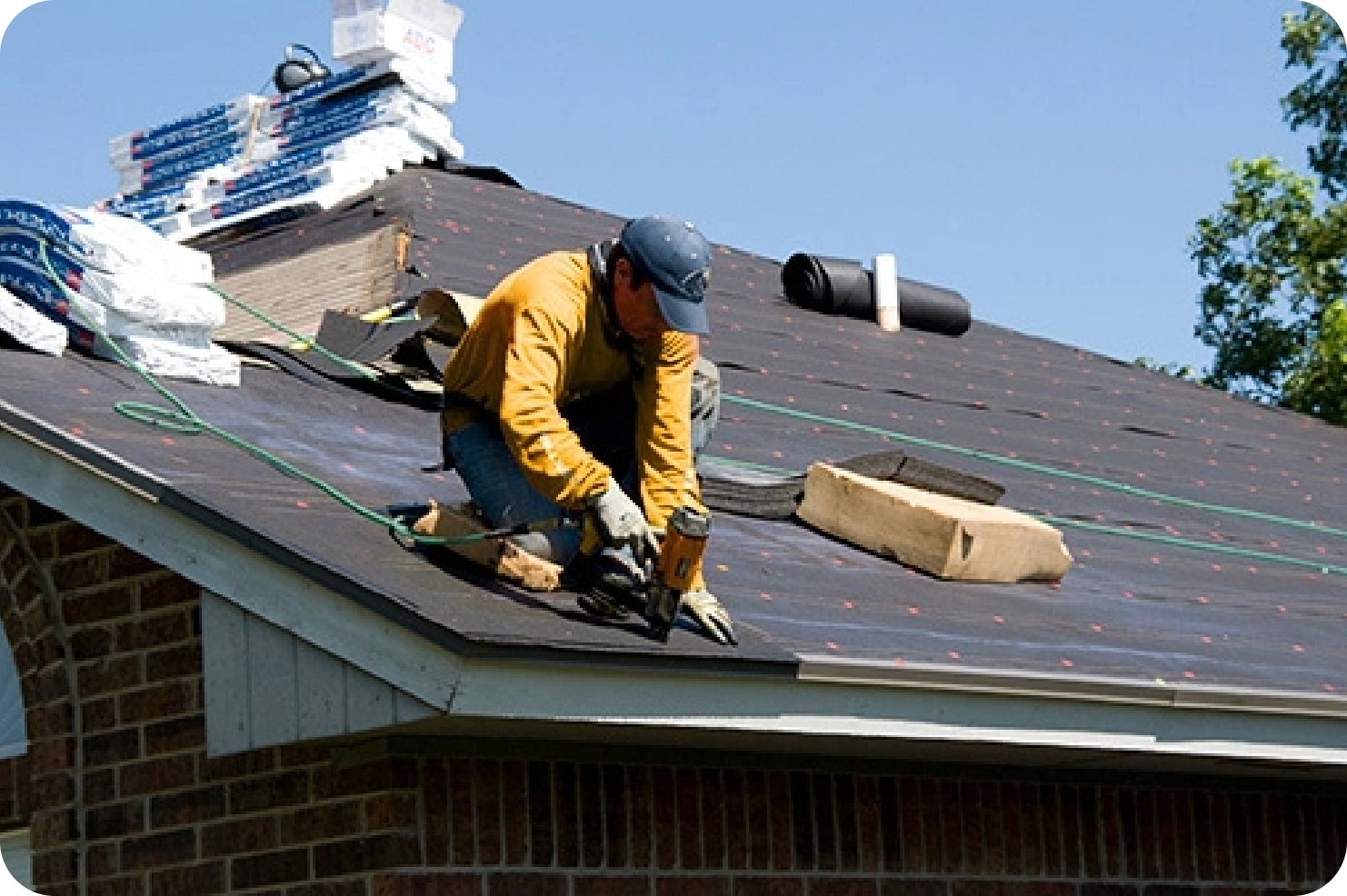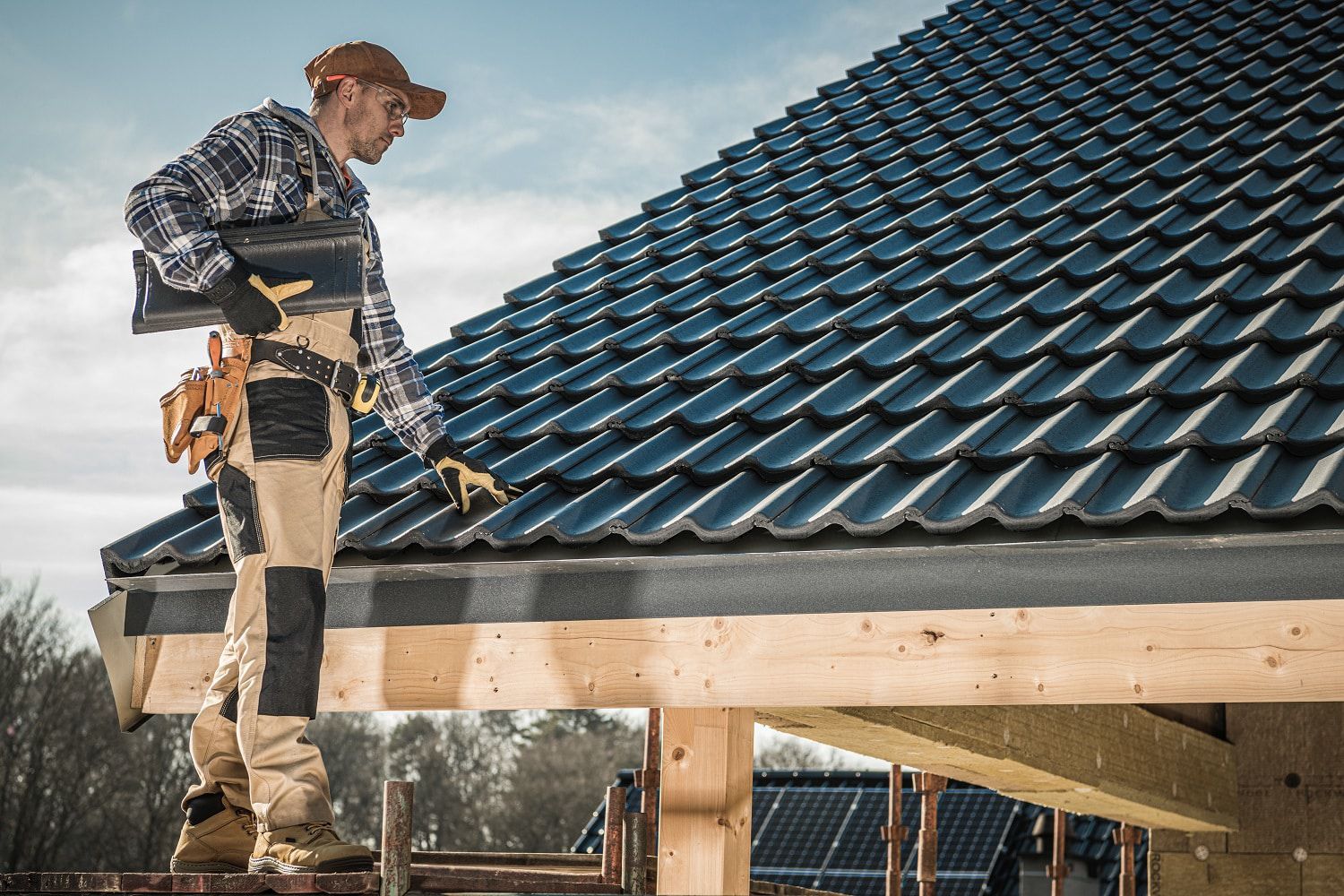How to Assess Different Roof Covering Choices for Your Structure Demands
Assessing roof covering alternatives for your structure requires a thorough approach that thinks about various elements such as the planned use of the framework, local environment conditions, and product features - Toledo Roofer. It is important to evaluate the advantages and disadvantages of different roofing types, from asphalt tiles to metal and clay floor tiles, while likewise factoring in first prices and long-term maintenance.
Evaluating Your Structure's Needs
To properly examine roof covering options, begin by extensively evaluating your building's requirements. Beginning by thinking about the structure's planned use, as various structures may necessitate varying roofing specs. As an example, residential roof coverings usually focus on looks and insulation, while industrial structures may concentrate on durability and load-bearing ability.
Next, review the neighborhood environment problems that will certainly affect roof performance. Aspects such as temperature variations, rainfall levels, and wind patterns can affect material option and style. A roof covering system that stands out in a pleasant environment may not execute also in locations prone to hefty snowfall or extreme heat.
Furthermore, assess the structural honesty of your building. Ensure that the existing structure can sustain the selected roof products, specifically if considering heavier options. It is likewise important to review any kind of neighborhood building regulations or regulations that may dictate certain demands for roofing systems.

Comparing Roof Covering Materials
Once a comprehensive analysis of your building's needs has actually been completed, the next step involves comparing numerous roof covering products. Each product supplies distinctive benefits and negative aspects, making it vital to straighten your selection with your particular demands and scenarios.
Asphalt shingles are extensively recognized for their price and ease of installment, making them a popular option for property structures. On the various other hand, metal roofing, understood for its sturdiness and long life, can endure severe climate conditions yet might come with a higher first investment.
Clay and concrete floor tiles give outstanding thermal insulation and aesthetic appeal, specifically for Mediterranean-style architecture, yet they need an even more robust architectural support because of their weight. Wood trembles deal a natural look and good insulation residential properties yet might require a lot more upkeep and are susceptible to fire risks.
Evaluating Cost and Budget Plan
Examining your roof covering alternatives requires a mindful assessment of price and spending plan factors to consider. The general budget plan for a roof job makes up a number of elements, including product prices, labor costs, maintenance, and prospective lasting financial savings. It is necessary to develop a clear budget prior to checking out details roof materials, as this will certainly assist the decision-making procedure look at more info and assist you stay clear of overspending.
Begin by getting quotes from numerous contractors to understand labor expenses in your area. Ensure that these estimates consist of all needed solutions, such as elimination of the old roof covering, setup, and any added functions, like insulation or air flow improvements - Toledo Roofer. Next, assess the cost of different roof products, thinking about both first setup expenses and anticipated life-span

Recognizing Power Performance
Energy efficiency plays a crucial role in the option of roof materials and systems, considerably impacting both power intake and general convenience within a structure. An appropriate roof covering can enhance thermal efficiency, decreasing the requirement for heating and cooling systems, which in turn reduces power bills and lessens ecological influence.
When reviewing roof covering alternatives, take into consideration materials that mirror instead of absorb warmth. Light-colored or reflective roof covering items can substantially decrease roof covering surface area temperature levels, bring about lower energy usage throughout warm months. Additionally, correct insulation and ventilation are vital to maximize the power efficiency of the entire roofing system. Insulation protects against heat transfer, while ventilation alleviates warmth buildup in the attic room space.
One more essential aspect is the roof's durability and maintenance requirements. Sturdy materials that require much less constant substitute add to lasting power cost savings. Additionally, the power performance of a roof can also be assessed via its compliance with well-known sustainability rankings such as ENERGY STAR or LEED.
Considering Visual Appeal
A roof's visual allure significantly affects the overall appearance of a structure, enhancing its building design and improving visual charm. Roofer. When evaluating roof choices, it is important to think about how the selected product, shade, and layout will certainly integrate with the existing structure and area. A well-designed roof can boost also the simplest of buildings, transforming them right into visual prime focus
Different roofing products supply different aesthetic high qualities. For instance, traditional roof shingles may evoke a traditional appeal, while steel roofing can present a modern, smooth look. Additionally, the color of the roofing product plays a crucial role; lighter shades can make a building appear even more spacious, while darker tones might develop a cozier setting.
In addition, building elements, such as dormers and eaves, can improve the roof covering's aesthetic impact. It is suggested to seek advice why not find out more from with specialist developers or architects to guarantee the chosen roof covering option straightens with the total style intent. Inevitably, a roof must not just supply practical advantages yet also contribute positively to the building's visual, showing the owner's taste and the character of the surrounding atmosphere.
Conclusion
